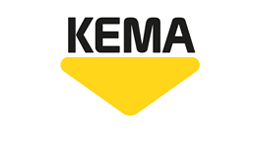History

1953: Beginnings of Kema Puconci
The Centre for Materials and Structures (ZRMK) from Ljubljana in cooperation with the nitrogen compound factory Azot Goražde is given an assignment to build a separation plant of quartz sand, which would provide Azot with 5000 tonnes of filter sand. Preliminary geological researches confirmed that in this area is a site of extremely quality mineral.
1954: District People’s Committee in Murska Sobota ensures survival of the separation plant
District People’s Committee in Murska Sobota which was affected by sorrows of strongly underdeveloped region, shows an interest in buying total assets of the separation plant and thus ensures its survival and further development. The contract was concluded on the 25th of August 1954 and its value was 30 million of former currency (Dinars).
1960: Accelerated development of the company
Thorough, accelerated and carefully planned geological research with a goal to strengthen the resource base begins. Accelerated development of the company is conducted with the 20% increase of the production. With time, the company gains knowledge and experience in this kind of production. The produced quantities of quartz sand become a sales and marketing interest.
1970: Production and sales boom
Production and sales boom begins with the implementation of long-term development plans. The separation is technically upgraded and new products are introduced—special building materials with quartz sand as a basis.
1978: Improved infrastructure
Increased demands lead to construction of new sand drying plants; a new production of building materials is built and storage capacities are increased.
1990: Formation of an independent company Kema Puconci p.o.
In the process of reorganization of BOAL Ruše, which the current plan was a part of, on the 1st of January 1990 the company branched off and proceeded the business as an independent company Kema Puconci p.o.
1991: Hard times after the independence
Kema as a company has a bad start due to Slovenian independence. Market conditions are formed by the inflation, collapse of Yugoslavian market and highly unstable home market. In these years, most effort is put into development and widespread production programme which enables Kema to become a serious supplier on the market.
1992—1993: Development of new business
In 1992 and 1993 a new business—retail of building materials—slowly develops. The company experiences development in 1995 with the opening of own store. First successes are achieved in Germany, France, and later in the eastern countries, such as Czech Republic, Slovakia, Poland, Belarus and Russia.
1995: Market penetration in the area of former Yugoslavia
In this year former Yugoslavian market slowly re-opens in individual new countries; promotion grows slowly but constantly.
1997: Environmental investments
By 1997, investments into the environmental protection and a partial increase of production capacities in a mixing plant are made. In this year Kema introduces a closed system of waste water treatment.
1998: Entry in the Companies Registry
On the 18th of February 1998 Kema Puconci makes an entry in the Companies Registry as a public limited company at the district court in Murska Sobota.
2002: New sand drying plant
A new sand drying plant is placed and put into operation; it substantially increases capacity and quality of sand drying.
2004: New mixing plant
A multiannual process of renovation of the production is finished with the completion of a new mixing plant which ensures uninterrupted supply of home and foreign market in case of increased demand.
2005: Merger of Kema Puconci PLC and Salonit Anhovo PLC
Kema Puconci PLC and Salonit Anhovo PLC as long-time business partners join forces in 2005. The connection brings higher efficiency of comparative advantages of joint companies and parent company, as well as exploitation of synergies in the development area, especially for the common policy of current material and energy supply.
2006: Successfully completed investment cycle
A ten-year investment cycle worth 10 million € is completed with the opening of a new administrative building, which offers excellent working conditions on more than 1,000 square metres. Kema Puconci PLC changes its legal status to Kema Puconci Ltd.
2007: Accelerated penetration into foreign markets
The construction of a new laboratory is finished in the early 2007; new addition allows even higher quality monitoring of input components and product control. At the same time, the development department gains new capacities. To increase sales capacities, Kema strongly directs on new additional markets by opening subsidiary companies.
2009: Opening of logistic centre
New logistic centre of Kema is one of the first facilities of such type in this part of Europe; it has environment-friendly technologies and uses renewable energy sources. The investment on 8,000 square metres is worth 2,5 million €. Logistic Centre provides storage space for more than 1,900 pallets on racks in the closed part and more than 4,000 pallet spaces in the covered part of the warehouse and on the external plateau.
2013: Beginnings of epoxy materials production
New market trends and the search for new opportunities for the expansion of production lead to decision on starting the production of epoxy materials. This showed to be an excellent move in the early years, because epoxides soon became an important part of sales programme.
2015: W&P becomes 100% owner
W&P Group from Klagenfurt upgrades its ownership connection established in 2011 and becomes a 100% owner of Kema.
2017: Become a part of SIH
Become a part of Schmid Industrieholding GmbH.
2017: Independent laboratory for epoxides
Good results and intensity of work lead to new needs for a special laboratory for epoxides, which offers researchers and employees new possibilities for the programme upgrade and a significantly more flexible operational work.
2018: Become a part of Murexin GmbH
Become a part of Murexin GmbH.
2019: Kema d.o.o. has been renamed to Murexin d.o.o.
Kema d.o.o. has been renamed to Murexin d.o.o..


